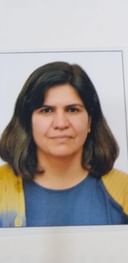Get the App
For Doctors
Login/Sign-up
Last Updated: Feb 14, 2022
BookMark
Report
Embryo Transfer - Know Procedure Of It In IVF!
Dr. Priya DahiyaIVF Specialist • 25 Years Exp.MBBS, MD - Obstetrtics & Gynaecology, DNB (Obstetrics and Gynecology)
Once a couple decides to go through IVF, they prepare themselves and go through various steps to reach the final stage of embryo transfer into the uterus. Read on to know more about the journey of IVF culminating in embryo transfer. From there it is another journey through to pregnancy.
- Step 1: The nurse will help identify day 1 of your menstrual cycle, and this is important.
- Step 2: The ovaries usually produce an egg between the 12th and 16th day of the menstrual cycle. After identifying day 1, ovary-stimulating medicines (higher doses of hormones) are given to support the release of more eggs. The ovaries may be subjected to ultrasound imaging to monitor the development of eggs.
- Step 3: About 8 to 15 eggs are then retrieved under anaesthesia, these are carefully picked to ensure a higher success rate of IVF. The process takes about 30 to 40 minutes in the clinic and the woman can go home and rest after this process. 1 or 2 embryos can be transferred at day 2, 3 or 5 stage of embryos.
Factors you need to consider while making a decision
- Sperm selection: Either fresh sperm or frozen sperm can be used by the couple. Fresh sperm is collected the same day as egg retrieval. Frozen sperms are thawed before use. Sperms of good quality are chosen after careful examination under a microscope to improve success rates of fertilization.
- Fertilization: This is where the name IVF is derived from. In-vitro (meaning in the glass, from the glass dish used) is where the fertilization occurs.
- Embryo development: Once fertilized, the embryo is kept in a conducive environment so that it can continue to grow optimally. The couple of kept updated on the progress here, as they would be wanting to know the status. After 5 to 6 days of fertilization, it can be implanted into the uterus.
- Embryo transfer: Once the medical team confirms that you are ready for an embryo transfer, you will be called into the doctor’s office. This is usually painless, but some women may have slight abdominal discomfort. You will be advised to drink water and come with a full bladder. The uterus is scanned to see whether the embryo is getting placed, and having a full bladder helps clearly outline the uterus. The embryo is placed inside you via a catheter through the cervix into the uterus, under ultrasound guidance. The doctor has about 1 mm area within which it should be placed correctly for good implantation. Therefore, this placement is very critical. One embryo is placed, and the others are frozen and may be used in case of failure.
- Confirmation: After a two-week wait (2WW), a blood test is done to test for HCG levels and confirm pregnancy.
In case you have a concern or query you can always consult a specialist & get answers to your questions!



+1.svg)
